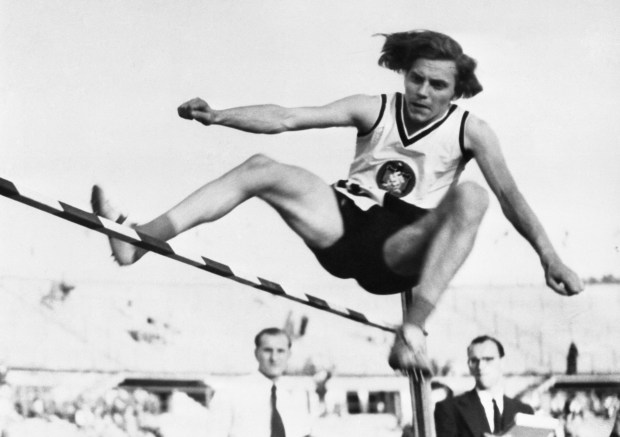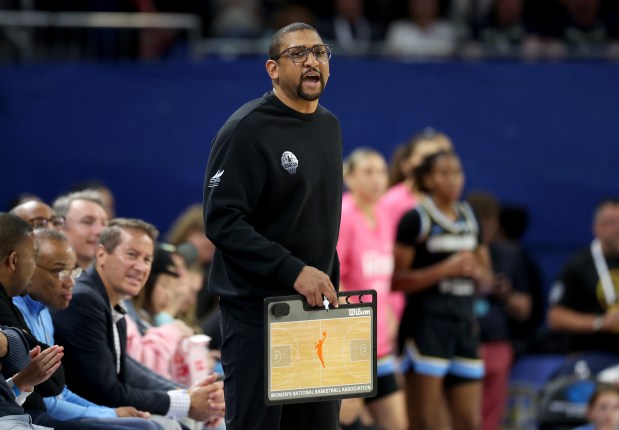Editor’s note: This is Part 2 in a three-part series from Northwestern University professor Ian Hurd and student Sadie Barlow that explores the history and geopolitics of the Olympics. Read Part 1 here. Look for Part 3 on Friday.
It may come as no surprise that the first modern Olympics were a men-only affair. The second, in Paris in 1900, included 22 women, and from then on, every Olympic Games has wrestled with whether, and how, to treat men and women differently. The concepts of equality and fairness are murky at the point where sports meets gender, and Olympic history is full of stories that show how hard it can be to muddle through.
Sex segregation is as much a part of the Olympic movement as medals, anthems and bribery scandals. There is no Olympic sport that is indifferent to gender in the sense of allowing everyone to join without regard to sex. As a result, every Olympic sport tries to regulate the boundary between men and women — and keeping up the distinction is a tremendous amount of work.
As soon as a sport differentiates athletes on the basis of sex, it needs a method to distinguish who goes in which category. And for every method, there will be ambiguities and miscategorizations, as well as contestation, inequality and injustice in the outcome. These are inescapable. One measure of an organization is how well it handles the complications that its own methods generate.
Since 1966, women’s participation has been subject to various tests of sex verification. The means have changed over time and have included visual physical exams (which was exactly as crude as it sounds), chromosome and genetic testing, and hormone testing. Today, many sports are adopting a blood standard — for instance, a maximum of 5 nanomoles of testosterone per liter of blood — as the measure of a woman. Testing methods have changed over time due to concerns about intersex individuals and those with hormone- or chromosome-related health conditions.
Historically, men have not had to submit to gender testing. The purpose of testing has always been to police against men sneaking into women’s competition.
Gender testing is controlled separately for each sport. Every Olympic sport has an international federation responsible for setting its rules, including the rules around male and female categories. This decentralized system means that rugby players and swimmers might face different standards for gender. In addition, the national Olympic committee of each country could have different rules for its teams. The tangle of jurisdictions virtually guarantees that, for instance, a South African distance runner will be treated differently than a Canadian trying for the soccer team, even if they have identical bodily characteristics. The Olympic ecosystem consists of hundreds of independent organizations across different sports and nations. The International Olympic Committee seems content to delegate the dilemmas of sex segregation to them.
The categories are being shaken anew today by the visibility of transgender athletes. Trans participation has put new pressure on old categories. It has always been true that the male-female binary was only a rough approximation of biological reality, but the complexity is multiplied with more gender categories and by circumstances of individuals moving across categories over their lives. Many Olympic sports today seek to avoid dealing with the issue by trusting the gender listed on a person’s birth certificate or passport. While this resolves the problem of unreliable tests, it outsources the hard part to the government that issued that document.
All this effort is intended to deter the problem of “sex fraud” in competition. The most famous case in the Olympics was a high jumper in 1936 who, today, would probably be classed as intersex. Dora Ratjen was raised as a girl, participated as a female competitor at the Berlin Games, and set records around Europe before being accused of being a man by competitors, police and a peculiarly nosy train conductor. Ratjen was acquitted of fraud and then lived as a man named Heinrich (and later Heinz).
What test would have revealed the gender truth about Nora/Heinrich/Heinz? It seems likely that the various tests used in the Olympics over the years might return a range of contradictory answers in this case. For most people, the diverse indicators of gender line up neatly and align also with how people feel about themselves. But in some cases, they don’t, and in those moments, the gap between reality and bureaucratic classification becomes contentious.
One way forward is to insist that the categories represent truth. This leads to gender binary fundamentalism, which often comes at the cost of human reality and individual dignity. The other route involves accepting that people don’t always fit the categories. This means giving up the illusion of scientific categories, which frees us from some artificial constraints but also makes it difficult to answer practical questions, such as who should be on the women’s pole vault team.
To point this out is not to criticize. It is instead to shine a light on how the Olympics navigate the fact that gender is biologically complicated with its immense and largely unaccountable decision-making power. Gender rules at the Olympics force female athletes to conform to an outsider’s theory of what constitutes a woman and also to accept the unchecked authority of global sports organizations.
To be sure, the problem is not exclusive to the Olympics — indeed, it may not be a “problem” at all. Many public policy decisions treat men and women differently. The problem is more conceptual, and more social, than just the Olympics: Every protocol to differentiate male from female will result in ambiguous cases, controversy and some instances of injustice. Rather than search for the perfect scientific measure of gender, what matters more is whether the organization can acknowledge ambiguity, admit to its role in creating occasional injustice and deal with the controversial cases with a measure of sensitivity and empathy for the people it harms.
The private power of the Olympic organizations is both enormous and unaccountable, which is a dangerous combination.
Ian Hurd is a professor of international politics at Northwestern University. He is the author of “International Organizations.” Sadie Barlow is an undergraduate student at Northwestern studying economics and international studies. She is working with Hurd this summer as a research fellow at the Buffett Institute for Global Affairs.
Submit a letter, of no more than 400 words, to the editor here or email letters@chicagotribune.com.




